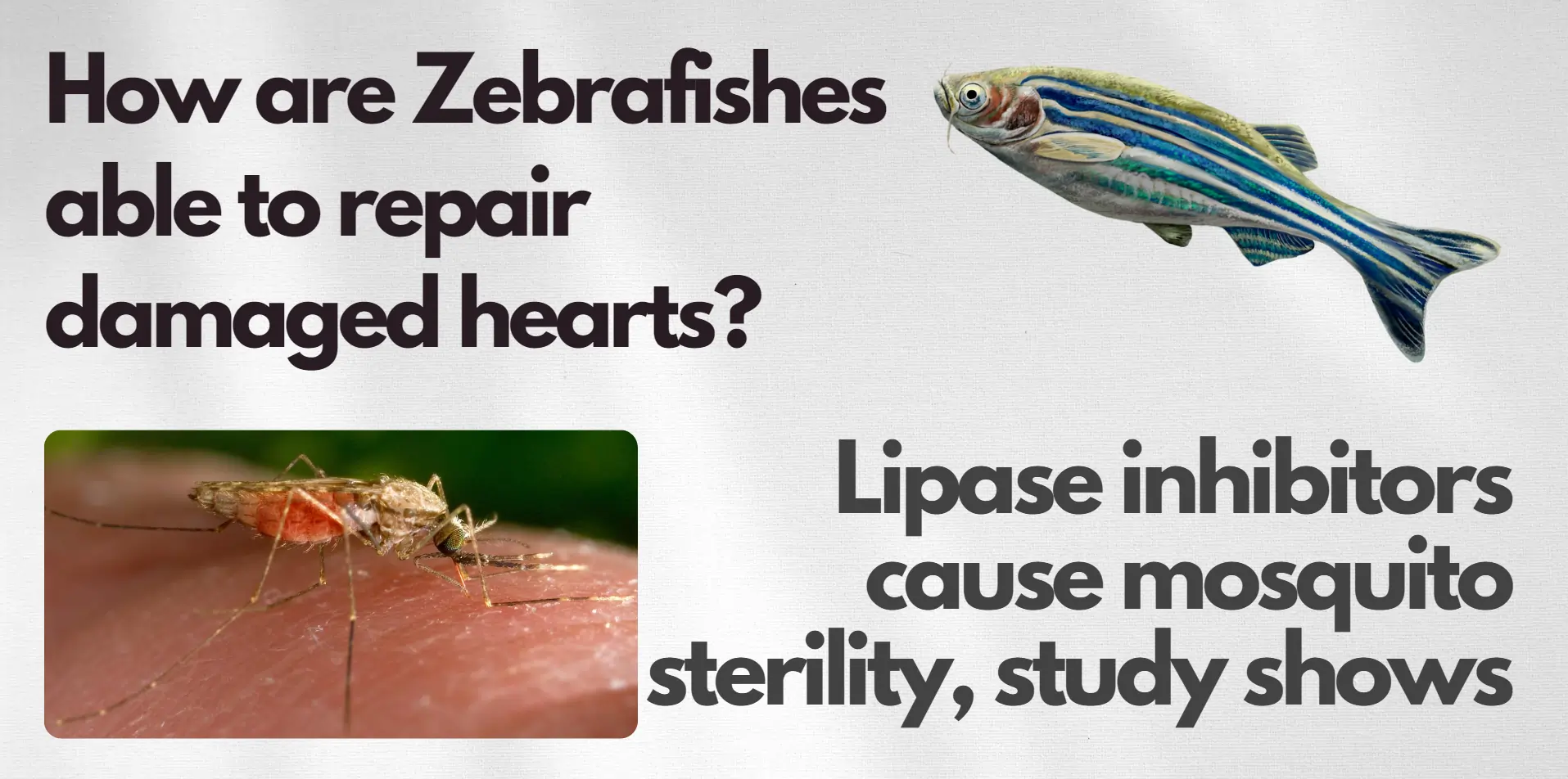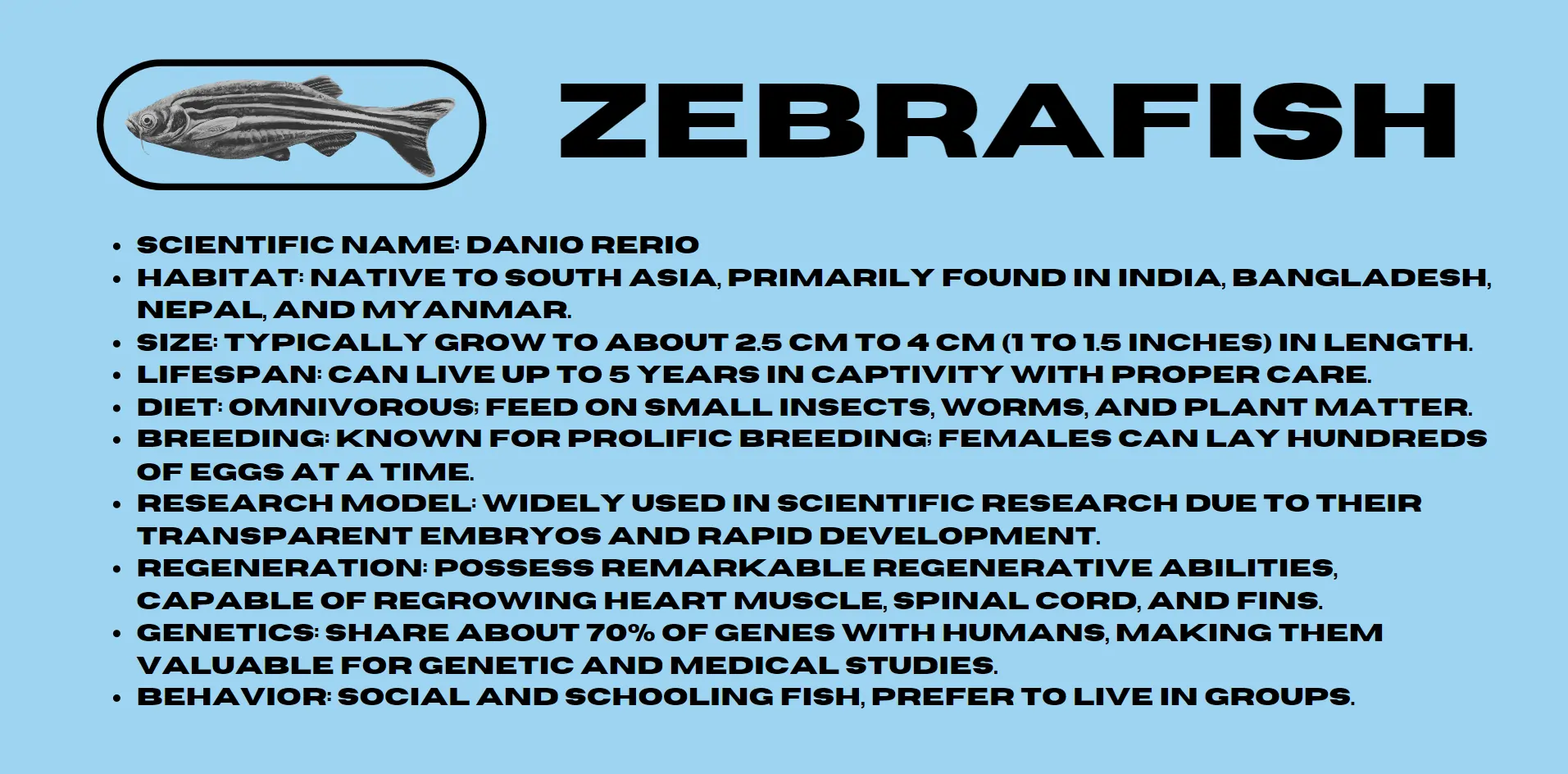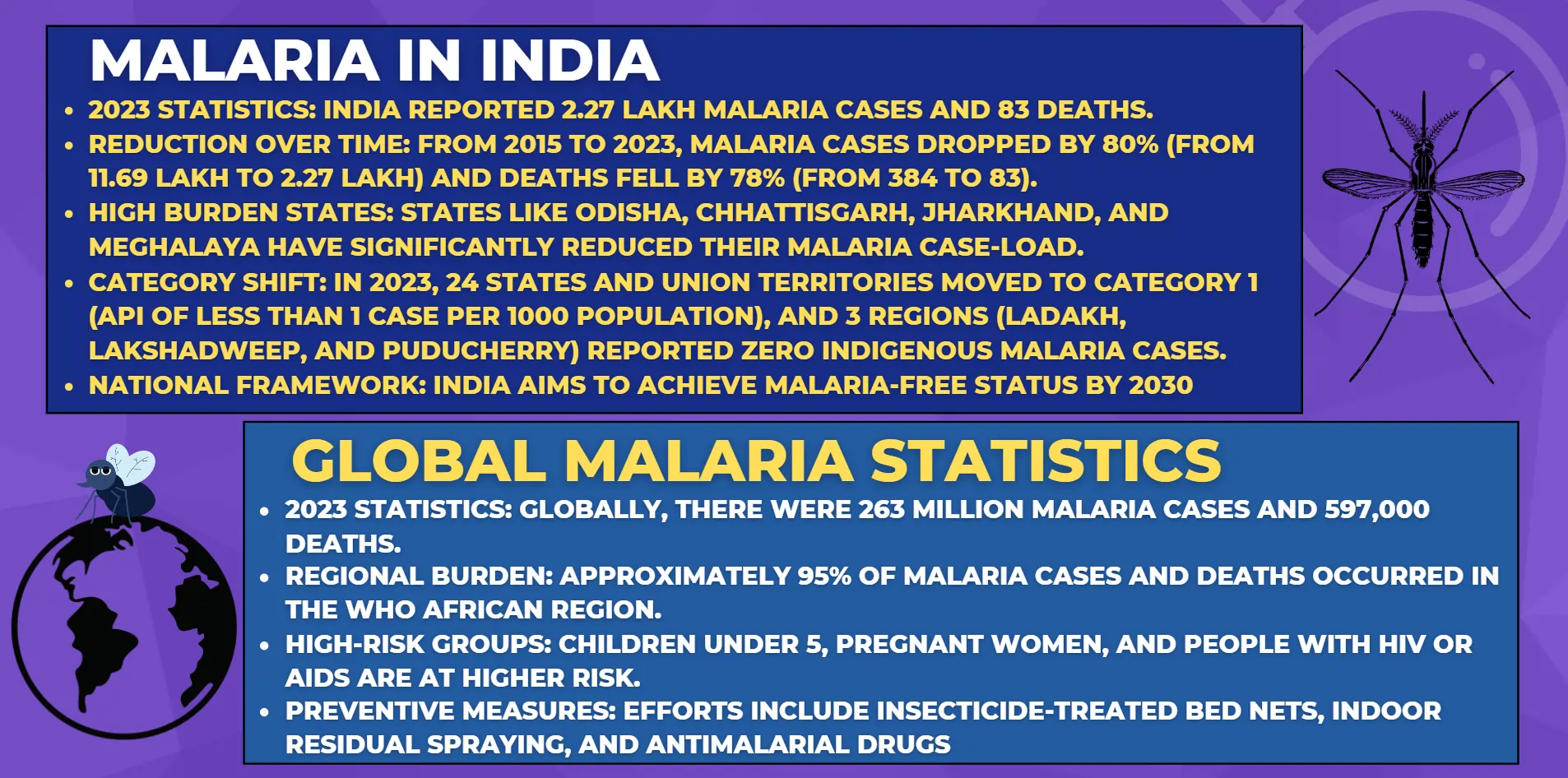
1. How are Zebrafishes able to repair damaged hearts?
Zebrafishes (Danio rerio) are some of the most interesting small animals, which can regenerate their dying heart cells, something that’s impossible for humans and many other animals. The fact that it possesses such a remarkable ability to regenerate has drawn interest from scientists all over the world because learning about how the heart regenerates is crucial to advancing the potential of regenerative medicine for human hearts.
The Regenerative Process in Zebrafishes
Usually, when the Zebrafish heart is damaged it gets fully repaired in approximately 60 days. This process includes cell division of cardiomyocytes and the on-going formation of new cardiac walls. The human cardiac muscle cell is rather passive to grow after an injury, whereas the Zebrafish can readily produce new heart muscles and the injured tissue is replaced by new tissues.
Key protein and genes involved
Recent studies conducted over the past couple of years have pointed to several proteins and genes that are essential for cardiac regeneration in embryonic Zebrafishes. One of them is the Hmga1 protein that assists in the clearance of molecular obstacles on chromatin, a material that determines DNA organization. This brings into play genes that have not been active for a while; this process basically facilitates cell division and growth. Interestingly, the Hmga1 gene is still expressed in adult Zebrafishes during heart regeneration, which is different to humans and adult mice where the gene is switched off after embryonic development.
Role of Fibroblasts
However, one of the outstanding questions about the regenerative process is the part played by fibroblasts connective tissue cells that synthesise proteins that can be used as signals to repair. These fibroblasts play an essential role of modulating regeneration process that involves newly developing muscles. Fibroblasts are essentially active in Zebrafishes in response to cardiac damage to produce new cardiomyocytes.

Immune response and scar tissue Formation
In humans, heart attack commonly leads to fibrosis: certain parts of the heart are replaced with fibrotic material that is detrimental to cardiac function. Adult Zebrafishes, in contrast, can regenerate cardiac scar tissue and restore damaged muscle. This ability is related to their immunity system, the ‘repair squad’ for scar tissue and new functional cardiac muscle.
Chances for Human Heart Repair
The discovery of the mechanisms behind Zebrafish heart regeneration has opened up exciting possibilities for human heart repair. Scientists have tried the Hmga1 protein on injuries in mice heart and have discovered that it made cardiac muscle cells to grow and become healthier, enhancing the hearts functionality without any ill effects. This indicates that parallel strategies may be created to repair human heart thus bringing about therapies for heart ailment.
Challenges and Future Direction
As much as Zebrafishes’ regenerative capabilities are informative, translating these results to human is difficult. The disparity in the anatomy between fish and mammals, plus the intricate nature of human cardiac tissues which requires more supporting cells and nutrients to survive, make it almost impossible to mimic the regeneration process in human bodies. Nevertheless, current on-going studies indicate several possibilities of utilizing Zebrafish-mediated therapies to cure heart ailments and enhance heart reconstruction.
Zebrafishes demonstrate incredible potential of Nature; or how they can knit their hearts back together when they are torn apart. Exploring the process by which heart tissue is regenerated is an idea that scientists know could provide new ways toward human heart repair and regenerative medicine. Nonetheless, there are numerous tasks that need further investigation, and the data obtained through Zebrafish studies show the potential way to create new approaches to the treatment of heart diseases.
2. Lipase inhibitors cause mosquito sterility, study shows
A research published by the PLOS Biology has established that lipase inhibitors can make mosquitoes infertile and may therefore be used as a tool to control malaria vectors. In the study, the researchers used the female Anopheles gambiae mosquito, which is the vector for malaria, to show that interfering with lipid metabolic pathways can affect reproduction in the insect.
Understanding Lipase inhibitors
Lipase inhibitors are substances which inactivate lipases, these being enzymes which catalyse the breakdown of lipids (fats). Since weight loss involves blocking lipases which are enzymes that catalyse fats to be used for various biological processes such as reproduction, these compounds will help to block lipases that hinder fat deposition.
The Study's Findings
The researchers fed adult female Anopheles gambiae mosquitoes with broad spectrum lipase inhibitors before infective blood meal. The effects evidenced in the study demonstrated that this exposure caused sterilization of mosquitoes. The lipase inhibitors reduced the capacity of the mosquitoes to shed fat stores which were poisonous to the embryos. While the embryos were comparable to fertilized eggs in the first few stages of embryo development and had significantly reduced metabolic rates and proper hatching was not observed.
Role of lipoproteins and Vitellogenin
Some lipids in the oocytes are transport by lipoproteins, mainly lipophorin and the yolk protein known as vitellogenin (Vg). These lipoproteins play a significant role in the maturation process of the egg, and their transport is disrupted and established when lipolysis is interfered. The work also proved a fact that if triglyceride lipase or lipid storage droplets in mosquitoes were inactivated, the energy providing capacity of the embryos was sharply reduced and they ceased to hatch which led to embryonic death.
Potential for Vector control
The findings of this study provide a proof of principle that targeting lipolysis can aid in mosquito control. It reduces the prevalence of malaria since mosquitoes which transmit the disease will be infertile to producing offspring. To determine the efficiency of the lipase inhibitors, the researchers tailored the feeding process and gave the inhibitor a chance to enter the lab-reared mosquitoes when the mosquitoes fed on the compound coated surface before feeding on the blood. This reduced the emergence of larvae from egg significantly which is a clear hint of a possible control of mosquitoes.
Implications for Human Health
Malaria is still a major health menace to the general populace with the disease being more rampant in tropical and Sub- tropical world. This does call for a research on effective ways of containing the menace posed by mosquitoes especially in the spread of malaria and other diseases associated with this creature. The use of lipase inhibitors offers a promising approach to achieving this goal, as it targets a fundamental biological process in mosquitoes without relying on traditional insecticides, which can have harmful environmental and health effects.
Future Research Directions
Nonetheless, the results of this present study indicate the encouraging applicability of lipase inhibitors in the future studies concerning the feeding and growth of fish while further investigation on the efficiency of lipase inhibitors must be carried out under the actual field setting. However, knowledge of the durability of these inhibitors in the mosquito population and the risks of generating resistance require further investigation. Further research, stakeholder cooperation, and interventions from research workers, public health officials, and policy makers are going to be vital in taking these findings and turning them in to sustainable approaches for eliminating mosquitoes.

The finding of lipase inhibitors to induce mosquito sterility is a breakthrough for the area of vector control. Thus, targeting lipid metabolism, researchers stipulate just the promising strategy to decrease the number of mosquitoes and prevent malaria spread. While the world on-going fights against diseases transmitted by the mosquito, such a breakthrough as this is promising for a healthier tomorrow.